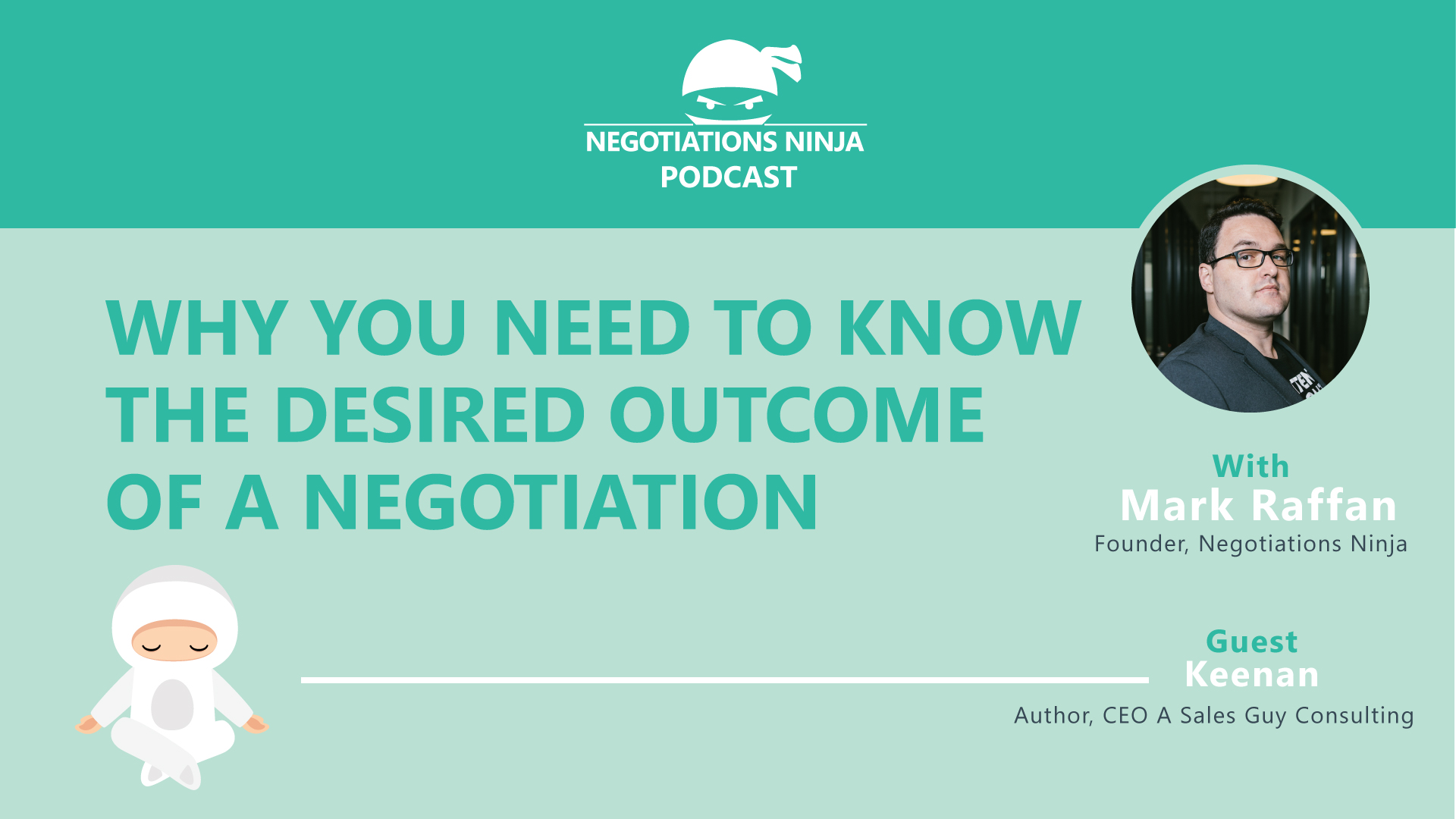A problem-centric sales sales approach—versus product-centric—is about learning the desired outcome each side wants to achieve in the negotiation process. The author of the book Gap Selling: Getting the Customer to Yes is the special guest on this episode of Negotiations Ninja. Listen to this episode as we talk about the ins and outs of his gap selling sales strategy.
Keenan is the CEO of “A Sales Guy Consulting” and “A Sales Guy Recruiting.” He’s also the best-selling author of multiple books (Gap Selling and Not Taught). His strategy is a game-changer for sales organizations, geared towards helping them find long-term success. Don’t miss his unique and successful take on sales!
Outline of This Episode
- [1:36] Keenan’s background in sales
- [2:48] The major difference between sales and procurement
- [4:05] Where sales and procurement miss the mark
- [7:13] Keenan’s mission to banish open-ended answers
- [11:52] Why ‘objections’ should never be an issue
- [18:08] Understand that the sales process is based on emotion
- [19:38] A sales negotiation is all about the desired outcome
- [21:47] Where to connect with Keenan
How sales and procurement can come together
Keenan half-jokingly states that aside from the fact that procurement and salespeople are both human, they’re 100% different. A typical procurement person’s objective and goal is to drive down costs and get the most out of the negotiation process. They leverage their power to reduce pricing.
A salesperson’s job is to help an organization maximize their desired outcome, make a change, or solve a problem that’s impacting the business—usually while making money. They’re on completely opposite sides of the spectrum. But if things are done right, they can come together in the middle. How do they do that? Keep listening to find out.
It’s time to banish open-ended answers
Keenan points out that most salespeople don’t ask the wrong questions—but they don’t get specific enough answers. Keenan shares an example: you ask your prospect about their procurement process and they tell you it’s inefficient, takes too long, they’re spending too much money, losing too many documents, etc.
Most salespeople stop there and think they’ve got the solution to their prospect’s problem. But they should’ve taken it a step further: What is their definition of inefficient? How long is too long? How much are they spending? How many documents are they losing? You need to take those open-ended answers and define them.
You MUST drill down as much as you can, to get as many specifics as you can, to see if you can solve their problem. Keenan admonishes: “If you don’t know those specifics, you really can’t customize an approach nor can you understand the size of the value of the deal.”
What is your prospect’s desired outcome?
Gap selling is simply calculating the gap between where a customer is at compared to their future state (where they want to be). The larger the gap, the more value you can add to the process. So you need to ask questions to gauge their current state AND find out what their desired outcome is. Once you understand the size of the gap you can define and measure where they’re trying to go.
If you know the root cause of their problem, you know whether or not your product or services can be the solution. You’ll know—before ever reaching an objection in the process—if you need to get out early. On the flip side, you’ll know that you’re bringing them something of value because you know their desired outcome. If an objection does come up, you’ll know enough to point out that the objection doesn’t impact the problem they’re trying to solve.
Expertise is where the money’s at
Every sales professional is taught that relationships are the be-all-end-all. But Keenan points out that your expertise matters more. Relationships matter, but Keenan points out that “Too many salespeople think relationships are synonymous with being liked.” He notes that a relationship exists whether you are conscious of them or not. A relationship is established when you sit next to someone on a plane. You’re conscious of their arm, every time they move to get up and go to the bathroom, etc.
Prospects don’t care about likability—they care about credibility. Credibility is what builds trust. The moment someone believes you are credible and that you CAN solve their problem, they’ll want to work with you. It all begins with demonstrating that you understand their problems and their challenges and what their desired outcome is.
Listen to the whole episode for a more in-depth description of a problem-centric sales approach, gap selling, how emotional responses impact the negotiation process, and more “why’s” behind the importance of determining a prospect’s desired outcome.
Connect with Keenan
- BOOK: Gap Selling
- Connect on LinkedIn
- Follow on Twitter
- Watch on YouTube
- A Sales Guy on LinkedIn
- Keenan’s Website
Connect With Mark
- Follow Negotiations Ninja on Twitter: @NegotiationPod
- Connect with Mark on LinkedIn
- Follow Negotiations Ninja on LinkedIn
- Connect on Instagram: @NegotiationPod
- negotiations.ninja




